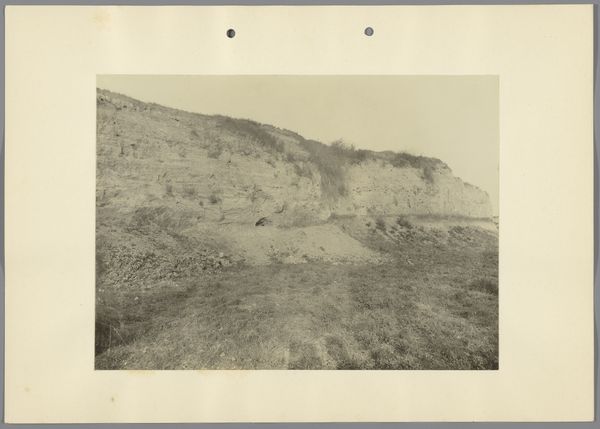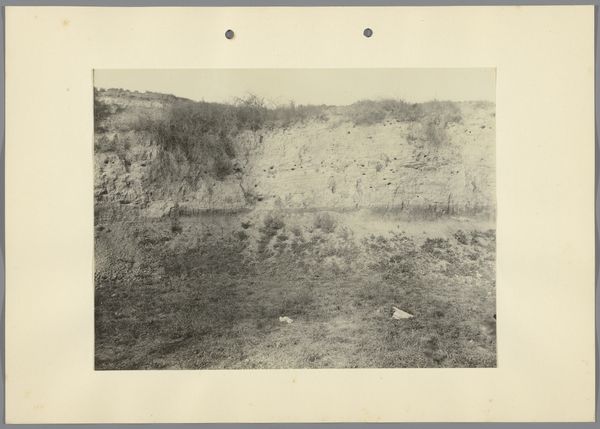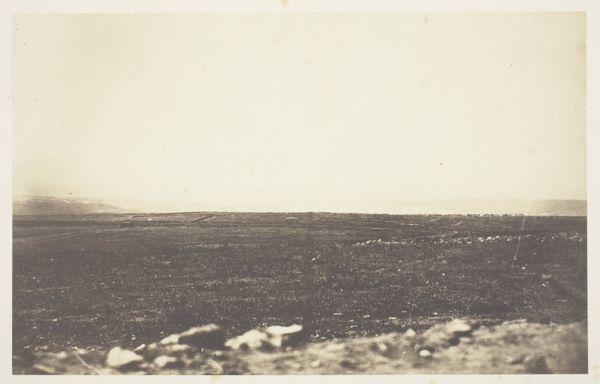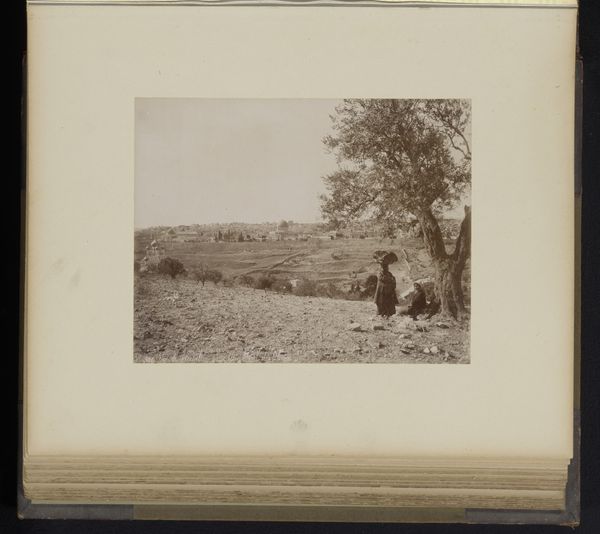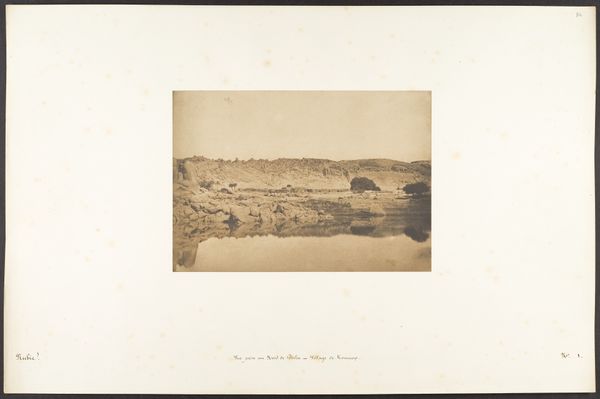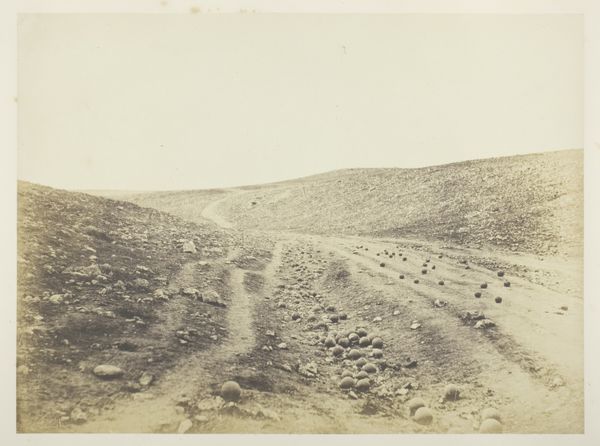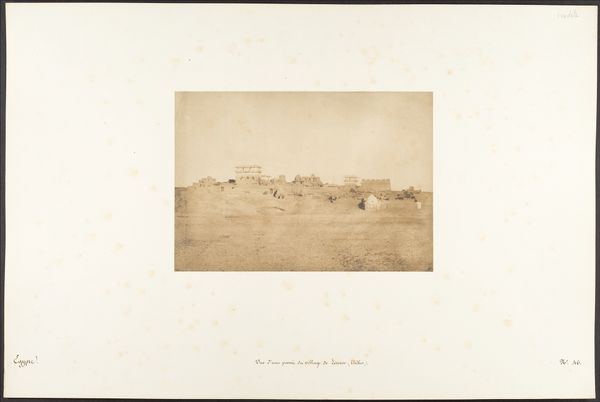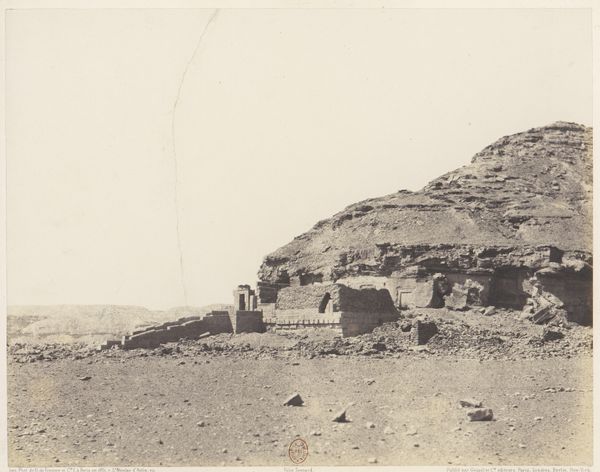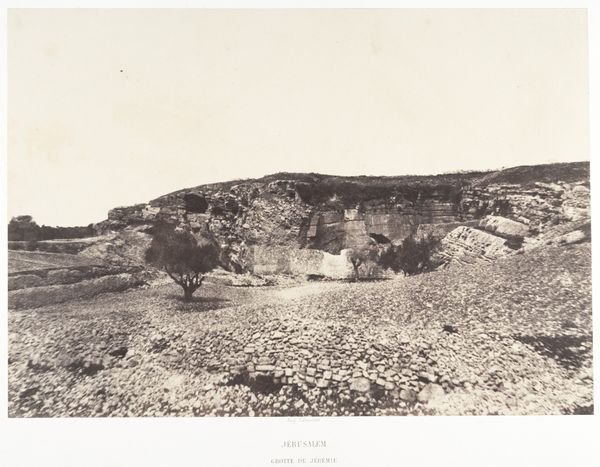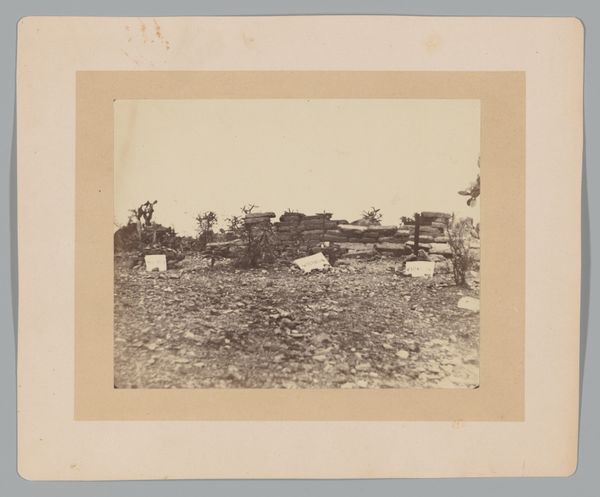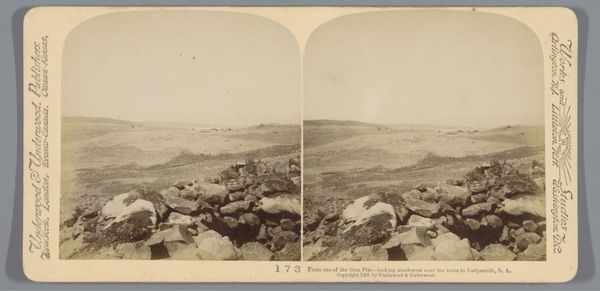![[Site of Execution of Emperor Maximilian] by François Aubert](/_next/image?url=https%3A%2F%2Fd2w8kbdekdi1gv.cloudfront.net%2FeyJidWNrZXQiOiAiYXJ0ZXJhLWltYWdlcy1idWNrZXQiLCAia2V5IjogImFydHdvcmtzL2RmYjY0MjA1LTgyOGEtNDhlNS1iMDJkLTMwNDMxMTMwMjNmZS9kZmI2NDIwNS04MjhhLTQ4ZTUtYjAyZC0zMDQzMTEzMDIzZmVfZnVsbC5qcGciLCAiZWRpdHMiOiB7InJlc2l6ZSI6IHsid2lkdGgiOiAxOTIwLCAiaGVpZ2h0IjogMTkyMCwgImZpdCI6ICJpbnNpZGUifX19&w=3840&q=75)
Dimensions: Image: 11.3 × 14.3 cm (4 7/16 × 5 5/8 in.) Mount: 18.3 × 22.1 cm (7 3/16 × 8 11/16 in.)
Copyright: Public Domain
Art Historian: Here we have a haunting image captured in 1867: "[Site of Execution of Emperor Maximilian]," a gelatin-silver print by François Aubert. Artist: My gut reaction? It's desolate. A real stark landscape with that lone carriage, looking like a funeral procession almost. What strikes you first about it? Art Historian: The starkness, definitely. But also, the almost documentarian approach. This isn't just any landscape; it’s the place where an Emperor met his end. Aubert's image feels freighted with a very specific historical weight. Artist: It’s that emptiness though. You see the tiny figures lining the horizon like spectators, but mostly you get this feeling of utter abandonment. Almost like the land itself is rejecting what happened there. Art Historian: Exactly! Consider that Romanticism, which greatly valued individual emotional experience, still pulsed strongly at this time. This place is infused with that somber mood—a physical manifestation of loss and failure on a grand scale. The site itself becomes a symbol, etched with political and emotional significance. Artist: A symbol for sure. That single track leading straight into the scene just rams home this idea of inexorable fate. Is Aubert trying to show us a romantic tragedy in real-time, like we're peering into a Greek drama or something? Art Historian: I think so. And think about how the very medium—photography—contributes to its symbolic power. It is documentation, and not allegory or myth. The photograph asserts: this really happened here, on this land. This bleakness is reality. Artist: It’s funny, isn’t it? How the most truthful medium becomes, in a way, the most emotionally manipulated one here. It invites contemplation—the real horror beyond what’s physically shown. You know, after all, executions often became huge public displays. So, what do we choose to show and what to ignore, eh? Art Historian: Indeed, Aubert isn't just showing us a landscape, but curating a landscape as a historical and psychological testament. The symbolic resonance transcends the literal depiction of a field. Artist: Heavy stuff indeed. Gives me the chills still. Art Historian: A chill that, hopefully, urges us to remember.
Comments
No comments
Be the first to comment and join the conversation on the ultimate creative platform.
